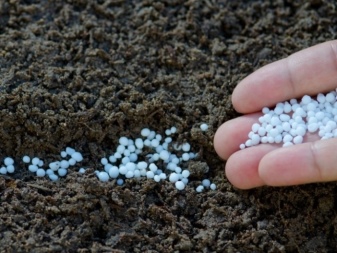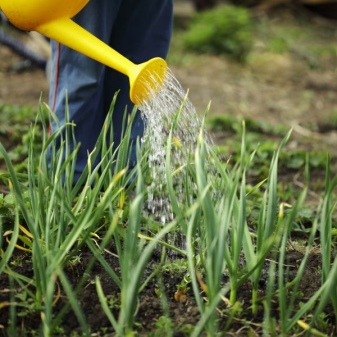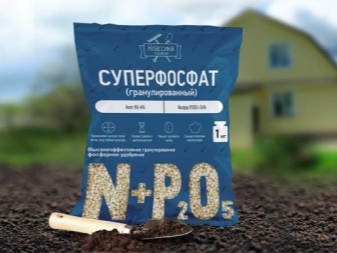The use of urea for onions

Currently, it is difficult to imagine a gardener who would not use fertilizers when growing any plants on his site. Thanks to their use, you can increase the yield of various crops. Complex feeding helps to protect plants from diseases and pests.

Advantages and disadvantages
Urea is a universal nitrogen fertilizer that is used by a large number of gardeners and gardeners for feeding.
Urea is a nitrogenous preparation in the form of white or transparent round granules that are odorless. This form of fertilization is explained by the desire to avoid caking during long-term storage, as well as to ensure flowability. In some cases, the drug is sold in the form of tablets, which are enclosed in a special shell. The peculiarity of this shell is that it dissolves for a long time.
Therefore, when it enters the soil, dissolution will occur rather slowly, as a result of which unnecessary nitrification of plants and the soil itself will not occur.

Urea has two more names - carbamide and carbonic acid amide. The chemical formula of the fertilizer is (NH2) 2CO. Almost half of the composition of the drug is nitrogen (46.2%), which is very useful for vegetable and ornamental crops, thanks to its use, plant growth is accelerated and activated. Nitrogen is included in plant protein, it is responsible for the construction of cells. If there is a lack of nitrogen, then this leads to a small number of shoots, yellowing of the leaves. In addition, signs of nitrogen deficiency in plants are:
- slow growth;
- underdeveloped kidneys;
- the number of kidneys is insignificant;
- insufficient fruiting;
- weak short shoots;
- thin leaves of a pale color.
Urea dissolves well in a liquid, so it is used both in pure form (in the form of granules) and in the form of a solution.

The advantages of the drug are obvious.
- The advantage of the product is the ability to use it in any soil, even light or acidic. On too moist soil, urea is also quite effective. Since the fertilizer is well fixed by the soil, it is practically not washed out by precipitation.
- Also, the urea solution does not leave chemical burns on plant leaves (unlike ammonium nitrate). Nitrogen from urea is easily and quickly absorbed by onions. On this basis, urea is equivalent to phosphate and ammonium sulfate.
- It is a convenient and versatile fertilizer suitable for different plants. Urea for onions acts as an excellent top dressing, accelerating growth and increasing yields.
The disadvantages are not so significant, and they are easy to neutralize if you follow certain rules.
- It is necessary to carefully calculate the dosage of fertilizer, because in the case of too strong a concentration near the seeds, the level of germination will noticeably decrease.
- Since urea tends to be highly moistened, during storage it is necessary to ensure dryness and protect it from moisture on the fertilizer.
- If the soil contains a low content of urease (hydrolytic enzyme), urea will be ineffective. Then it is preferable to use other organic fertilizers.


How to use
Onions are not a very capricious plant, they tolerate minor frosts and changes in air temperature well. Even not too experienced gardeners can grow a good harvest of this plant. But onion crops are quite demanding on soil fertility. Since the roots do not go deep, the topsoil on the garden bed is quickly depleted. Therefore, it is very important to carry out top dressing in order to obtain a good harvest. Succulent green shoots and large bulbs will only develop when there is sufficient supply of the most important nutrients such as nitrogen, phosphorus and potassium. Timely and correctly performed feeding has a beneficial effect on the head and greenery of the plant.
Urea is one of the most concentrated nitrogen fertilizers and is therefore excellent for onions. Regardless of the specific variety and type of plant (shallot, batun, leek, onion), carbamide is an effective remedy.
It is this drug that is directly involved in the active nutrition of plants and the formation of chlorophyll, which affects the process of photosynthesis.


Urea can be used in different periods of plant growth as root and foliar feeding of onions.
- Pre-sowing time. Fertilizer must be applied to the soil and immediately embedded in the soil to a depth of about 4-5 centimeters so that the ammonia does not evaporate. Pre-fertilization of the soil is necessary so that the buaret, which is formed during the granulation of the fertilizer, has time to decompose. When preparing a plot of land for planting, 5-10 grams of granular urea must be added per square meter of area.
- During sowing. It is required that the seed and the preparation are separated by a layer of soil. This condition is necessary, since it is necessary to protect onion seeds from external influences, to which they are quite sensitive. At this stage, it is recommended to carry out complex feeding using other types of nutrients. The combination of urea and potassium fertilizer seems to be the most effective.
- Feeding during the growing season, when the feather of the onion reaches about 10 centimeters in height. This stage is of great importance for the further growth and development of onion crops. It is at this time that a very active growth occurs and therefore the amount of nutrient intake, primarily nitrogen, increases sharply.
- Foliar dressing is carried out using manual spraying, which is produced in the morning or evening hours.


Not all gardeners and summer residents always have scales at hand. Therefore, in order not to add too much funds, it must be remembered that approximately 130 grams of carbamide is placed in a glass, about 15 grams in a matchbox, and 10 grams in a tablespoon. Fertilizing onions will require approximately 20 grams per square meter. An overabundance of the drug will lead to a deterioration in the quality of the crop and the accumulation of nitrates in the onion.
Onion urea is usually applied superficially, but at the same time it is covered with a layer of soil. The preparation granules are scattered directly next to the plants and sprinkled with a small amount of soil. This is required in order for the maximum amount of nitrogen and other nutrients to enter the plant. In addition, ammonium carbonate in the open air is subject to fairly rapid decomposition. Then the beds are leveled with a rake. The next step is watering. When fertilizer enters the soil, it interacts with bacteria and enzymes in it.
Urea has the property of acidifying the soil, therefore it is recommended to use chalk (limestone) in order to neutralize it. It is introduced into the ground at the same time as urea. In this case, it is important to observe the correct proportions. For 500 g of fertilizer, 400 g of chalk should be added.


Urea helps protect plants from infectious diseases. For example, from downy mildew onion, scab or purple spot. Also, onion plants can be affected by powdery mildew, in which a gray-white bloom appears on the feathers.In order to prepare a solution for spraying against diseases, it is necessary to take about 50 grams of the drug and dilute it in 1 liter of water. This mixture is effective in protecting against various fungal diseases.
When the leaves turn yellow, urea is quite effective. To avoid this phenomenon in early spring, immediately after the emergence of seedlings, it is required to treat the beds with fertilizer. With a lack of nitrogen, at first, only the tops of the onion feathers turn yellow without dry leaves. However, if the situation is not corrected, the tips of the feathers will begin to curl, and after a while they will simply die off.
Lack of nitrogen in onions affects the structure and shape of the plant's feathers. If they become short and too narrow and at the same time change their color (instead of a bright green color they become very pale), then this is a clear sign of nitrogen starvation.

As a top dressing
Onions are planted in spring and autumn. The maximum need for feeding occurs in the spring, when onion feathers are actively growing. It is also worth using urea in summer in June so that the greens do not turn yellow. Foliar feeding of onions helps growth and at the same time protects against all kinds of diseases.
In autumn, onions are planted before the onset of frost. In this case, feeding is carried out 2 weeks before planting.
To feed the plant, you need to prepare a solution in the proportion of 10-15 grams per 10 liters of water. The prepared nutrient solution can be watered from the watering can. It is correct to do this only in the morning or evening hours. Processing can be carried out during the day, subject to cloudy weather. Because if a large amount of the product gets on the greens of onions in the active sun, chemical burns on the plant may occur.
All top dressing should be stopped no later than 3 weeks before harvesting and bulbs. If this rule is not followed, the onion does not ripen well enough.


Fertilizer in the garden should not be too much. Therefore, it is necessary to adhere to the recommendations and instructions that the manufacturer places on the packaging with the product. In case of oversaturation of the soil with nitrogen due to improper use of the drug, it is necessary to get rid of it with the most abundant watering in the garden.
For pest control
Urea is used not only for feeding onions, but also as a remedy for various pests. Processing is carried out in the spring after the establishment of a positive air temperature, for example, more than +5 degrees. A solution of carbamide helps to get rid of flies, suckers, weevils, aphids. To prepare the solution, it is necessary to dilute 50-60 grams in 1 liter of water. Avoid spraying with too concentrated a solution (more than 100 grams per 1 liter), as this can lead to burns of green shoots.
Onion fly is the main pest for onion crops. In appearance, this insect differs little from an ordinary fly, but it does much more harm to the plant. The onion fly becomes more active in late April - early May.


Useful tips for use
- Urea can be mixed with other types of fertilizers. But they must be dry. In the case of combining urea and superphosphate, it is necessary to neutralize excess acidity with limestone (chalk).
- Despite the fact that it is recommended to feed onions with urea several times during the same season, you should still not do this too often. The amount of the nutrient mixture cannot be exceeded, because in this case, against the background of the active growth of greens, a large bulb will not form.
- It is necessary to fertilize with nitrogen preparations before the arrows appear, because this will subsequently affect the storage of onions. It won't last long.
- To ensure a good harvest, it is necessary to observe the irrigation regime. Even if the soil is saturated with nitrogen-containing fertilizers, it is difficult for onion roots to absorb them from dry soil.Therefore, in order for the onion to get everything useful from the soil that is there after feeding, it is necessary to monitor the degree of soil moisture in the garden.


Urea is an inexpensive and readily available preparation that can significantly enhance the growth of onions. Therefore, many gardeners choose this particular fertilizer for feeding onions.








The comment was sent successfully.